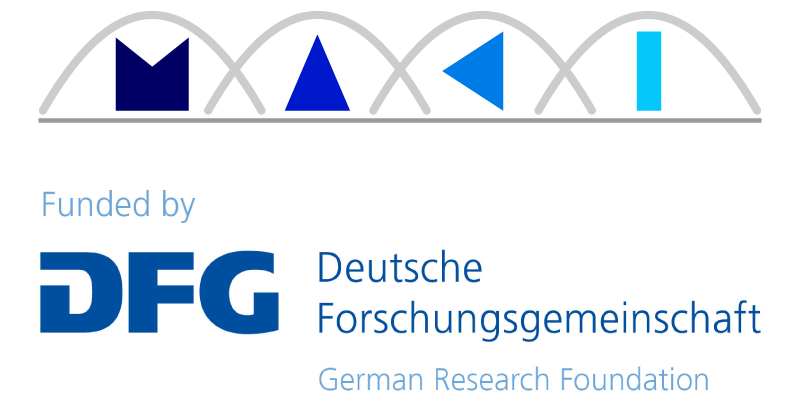Predictive Context Analysis for Anticipatory Networks
Subproject C5 investigates how predictions of the usage context can be leveraged to achieve better quality of service in the future Internet. Novel methods to classify and predict exogenous events with a high number of participants will be developed. In addition, rules to detect these exogenous events will be extracted and executed on an innovative probabilistic, proactive and mobile CEP engine located on wireless nodes at the edge of the Internet to proactively trigger network transitions in a novel anticipatory, software-defined wireless network.
Anticipatory networks can proactively optimize their operation based on predicted events. Here, in particular, predictions of the usage context are important. The sensory abilities of today's mobile devices and the ubiquitous availability of potentially relevant data on the Internet facilitate the creation of such predictions. Subproject C5 explores how to use predictions of the usage context for proactive transitions in order to improve the service quality of Internet services. The focus of the examinations is on exogenous events that cause major changes in the number of network participants (e.g., public events). New methods for the classification and prediction of exogenous events as well as new methods for the extraction and execution of rules based on local sensory data of mobile devices can determine the probability of occurrence for exogenous events and proactively trigger transitions, e.g. the pre-allocation of resources, location-based pre-fetching of content, event-driven autonomous communication in ad-hoc mode, opportunistic dissemination or proactive delegation of data and computations. The previous preparatory work of the applicants – since May 2015 by an associated co-operation of the department Wirtschaftsinformatik | Electronic Markets within MAKI – encompass both the identification of potential data sources, as well as the testing for relevance and suitability with regard to the required information. Furthermore, first approaches have been developed and tested to collect and aggregate information from semi-structured and heterogeneous data sources on the Internet. In addition, there is preliminary work on the use of complex event processing (CEP) approaches for the correlation of sensory event streams and for the experimental analysis of the runtime behavior on virtual mobile devices. The insights gained from the preliminary work will result in methods to predict exogenous events and trigger proactive transitions.
In phase II of MAKI, subproject C5 predicts the usage context for proactive transitions in wireless networks of autonomous nodes on the edge of the Internet. The intention of the transitions is to preserve the Internet connection and deliver, e.g., demanded response times, bandwidth and energy efficiency for mobile applications. The prediction therefore includes, for example, approximate information about the number of network participants, the location, and time of events, the used services / applications, as well as the node density and the mobility of the nodes. Heterogeneous data sources from the Internet are used to gain a data base from raw data. It serves as the basis for the development of prediction models for the usage context by means of statistical methods and methods of machine learning to extract (semi-) automated rules for the probability of occurrence and attributes of exogenous events. The extracted rules are formulated with the aid of the CEP paradigm and are implemented locally on the nodes on the edge of the Internet in a novel probabilistic, proactive, and mobile CEP engine in order to proactively initiate transitions in an anticipatory software-defined network. The probabilistic and proactive features of the CEP engine also allow future resource conflicts of coexistent multi-mechanisms to be predicted in the form of probability values. Since exogenous events are often not isolated from one another, but are in parallel to each other or overlap, conflicts along the probability of occurrence of possible exogenous events are detected or certain proactive transitions are initiated. The challenges consist, on the one hand, in the classification of special events and the approximate determination of the predicted parameters, in which information about the mobility of the nodes in such situations, the used services, and their requirements on the network, must be gained empirically. In addition, the probabilities of occurrences of these events must be expressed by rules of a probabilistic, proactive, and mobile CEP engine. This CEP engine must be developed in such a way that it allows the best possible predictions despite a large number of possible events.
Subproject C5 provides the prediction of exogenous events in MAKI based on the real usage context, to develop a basis for other subprojects, to develop proactive transitions and to evaluate them by simulation and experimentally. It contributes to proactive transitions, to anticipatory software-defined networks on the edge of the Internet, and to predict future resource conflicts of coexistent multiple mechanisms.
Subproject leader C5
- Prof. Dr. Oliver Hinz
- Prof. Dr. Bernd Freisleben



